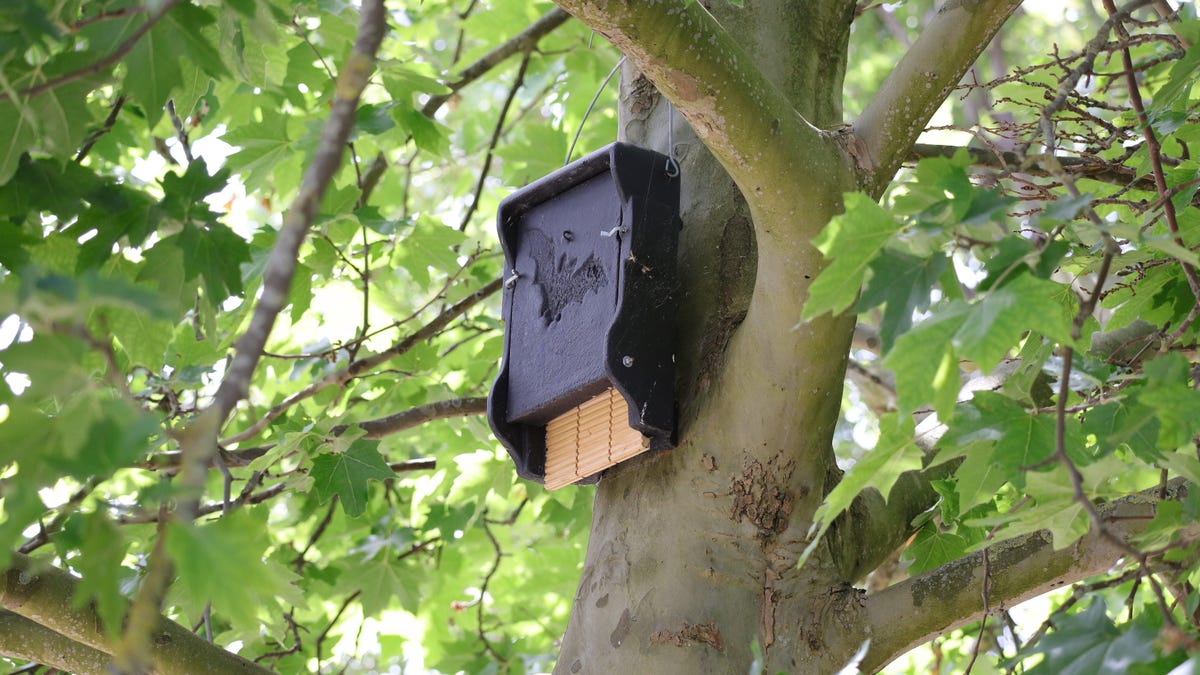How to Attract Bats to Your Yard (and Why You'd Want To)
Thanks to centuries of folklore linking bats to vampires, these nocturnal winged creatures have long been considered spooky and something to fear. But the ones that live in our backyards are nothing to be afraid of: In fact, they...

Thanks to centuries of folklore linking bats to vampires, these nocturnal winged creatures have long been considered spooky and something to fear. But the ones that live in our backyards are nothing to be afraid of: In fact, they can be helpful to have around. Here’s how to attract bats to your yard, and why you’d want them there in the first place.
The benefits of bats residing in your yard
So why, exactly, would you want to welcome bats into your own backyard? For starters, if they’re native to your area, they’re an important part of the local ecosystem, including serving as pollinators like bees and birds. But as more land is being developed, bats are displaced from their natural habitats, and need to relocate—ideally, to somewhere in the same area.
But what’s in it for you, specifically? Let’s start with the free, natural pest control. The most common species of bat in North America (Myotis lucifugus, a small, brown bat) primarily eats insects, including mosquitoes, gnats, mayflies, and midges, as well as others that can damage your garden plants, like moths and beetles. Better yet, they have healthy appetites, with a single bat typically chowing down on around 6,000 to 8,000 bugs each night.
And it doesn’t end there: After digesting these insects, bats’ poop—known as “guano”—is a great fertilizer. It’s full of phosphorus and nitrogen, and can be used to grow vegetables, herbs, flowers, ornamental plants, and fruit and nut trees.
How to attract bats to your yard
If you decide you’d like to welcome some neighborhood bats, here’s what you can do to make your yard more appealing:
Leave your leaves: Instead of raking them up, allow the dead leaves in your yard to rot in place. This will attract insects seeking shelter under the damp leaves, followed by bats who want to eat them.Provide a water source: A flat area of standing water that’s unobstructed by branches and fences not only gives the bats a place to swoop over to take a drink, but it also attracts bugs like mosquitoes—giving the bats a source of water and food.Grow native plants and trees: Bats eat native insects, which are drawn to native plants.Don’t remove dead or downed trees (if possible): They’re move-in-ready homes for bats.Build a bat house: If nature hasn’t provide your yard with bat accommodation, you can build your own.Keep cats indoors: Bats, along with birds and mice, are frequent victims of cat attacks.Finally, it’s important to keep in mind that as helpful as bats can be, you should never attempt to touch or handle one. Fortunately, they’re not very interested in interacting with humans, and are unlikely to approach you on their own. While most bats don’t have rabies, that’s not a chance you want to take.

 MikeTyes
MikeTyes 
































